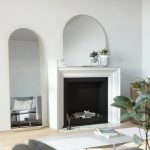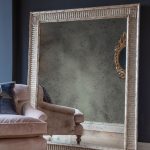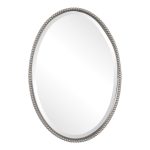Unlock Your Style With The Mesmerizing Mirror Geometry: Click Here To Transform Your Look!
Mirror Geometry: Enhancing Reflections in the Digital World
Introduction
Dear Readers,
1 Picture Gallery: Unlock Your Style With The Mesmerizing Mirror Geometry: Click Here To Transform Your Look!

Welcome to our informative article on mirror geometry! In this digital era, reflections play a crucial role in enhancing visual experiences. Whether it’s in photography, virtual reality, or even architectural design, mirror geometry has become an essential technique to achieve realistic and captivating reflections. In this article, we will dive deep into the world of mirror geometry, exploring its various applications, advantages, and disadvantages. So, let’s get started!
What is Mirror Geometry? 🌟

Image Source: ytimg.com
Mirror geometry, also known as reflective symmetry, is a geometric concept that deals with the reflection of shapes or objects across a line of symmetry. It is widely used in computer graphics and visual arts to create accurate and realistic reflections. By applying mirror geometry techniques, designers and artists can mimic the behavior of light as it bounces off surfaces, resulting in visually stunning and immersive experiences.
Who Uses Mirror Geometry? 🖌️
Mirror geometry finds applications in various fields, including:
Photography: Professional photographers utilize mirror geometry to capture stunning reflections and create visually appealing compositions.
Virtual Reality (VR): VR developers employ mirror geometry to simulate realistic reflections, enhancing the immersion and overall user experience.
Architecture and Interior Design: Architects and interior designers use mirror geometry to visualize and plan spaces, allowing clients to see how different elements and materials interact and reflect light.
These are just a few examples of the wide-ranging applications of mirror geometry.
When and Where to Use Mirror Geometry? 🌍
Mirror geometry can be used in various scenarios, including:
Creating lifelike reflections on water surfaces, such as lakes or pools, in virtual environments or digital artworks.
Designing mirrors and reflective surfaces in architectural projects to achieve accurate representations of real-life spaces.
Enhancing the aesthetics of product photography by introducing reflections that add depth and dimension.
By leveraging mirror geometry, professionals in these fields can elevate their work to new heights.
Why Choose Mirror Geometry? 🌈
Mirror geometry offers numerous advantages:
Realism: By accurately reflecting light and objects, mirror geometry adds realism to digital creations and visual representations.
Enhanced Visual Appeal: Reflections created using mirror geometry techniques can make images, scenes, and virtual environments more captivating and visually striking.
Improved User Experience: In virtual reality applications, mirror geometry contributes to a more immersive and engaging experience for users.
However, there are also some disadvantages or considerations to keep in mind when using mirror geometry.
The Pros and Cons of Mirror Geometry 📊
Advantages:
Realistic Reflections: Mirror geometry allows for the creation of accurate and lifelike reflections.
Enhanced Visual Quality: By incorporating mirror geometry, visual content can achieve a higher level of quality and realism.
Increased Immersion: Mirror geometry enhances the immersive experience in virtual reality environments and digital artworks.
Disadvantages:
Computational Complexity: Implementing mirror geometry can require significant computational resources, making it more demanding for hardware and software.
Artistic Limitations: The use of mirror geometry may introduce constraints on artistic freedom, as it focuses on accurate reflection rather than creative distortion.
Technical Expertise: Proper implementation of mirror geometry techniques often requires specialized knowledge and skills.
Frequently Asked Questions (FAQs) ❓
Q1. Can mirror geometry be used in video games?
A1. Absolutely! Mirror geometry is commonly utilized in video games to create realistic reflections on surfaces, adding to the overall visual appeal and immersion of the game.
Q2. Are there any alternative techniques to mirror geometry?
A2. Yes, there are alternative techniques like cube mapping and screen space reflections (SSR), but mirror geometry remains a popular choice due to its accuracy and flexibility.
Q3. Can mirror geometry be applied to curved surfaces?
A3. Yes, mirror geometry can be applied to curved surfaces by using advanced algorithms and mathematical transformations.
Q4. Are there any open-source libraries or software available for implementing mirror geometry?
A4. Yes, several open-source libraries and software, such as OpenGL and Unity, provide support for implementing mirror geometry techniques.
Q5. Is mirror geometry limited to digital applications only?
A5. No, mirror geometry concepts can also be applied in physical designs, such as architecture and interior decorations, to achieve accurate reflections.
Conclusion: Reflecting on Mirror Geometry ✨
In conclusion, mirror geometry is a powerful technique that enables the creation of realistic and captivating reflections in various digital and physical domains. From photography to virtual reality, mirror geometry enhances visual experiences, creating immersive worlds and lifelike representations. However, it does come with its own set of considerations, such as computational complexity and artistic limitations. Regardless, mirror geometry remains a valuable tool for professionals seeking to push the boundaries of visual excellence.
Final Remarks
Dear Readers, we hope this article has shed light on the fascinating world of mirror geometry and its applications. Whether you’re a photographer, designer, or simply an enthusiast, we encourage you to explore the possibilities offered by mirror geometry and unleash your creativity. Keep reflecting and creating amazing visual experiences!
This post topic: Mirror



